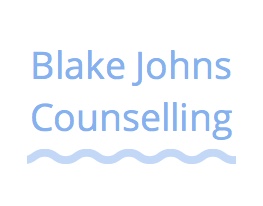Violence with boys is a growing concern in Margaret River, whether it shows up as violence, abuse, aggression, coercion, control, or disrespect. As a therapist, I’ve worked with many adolescents who have used violence, and I have learned about the stories behind their actions. This blogs explores what happens underneath aggressive behaviours in boys, and how therapy can help create healing and safety.
Understanding Violent Behaviour in Boys
For boys using violence/abuse, harmful behaviours are just the ‘tip of the iceberg’. For example, imagine an iceberg. How much of an iceberg is visible above water? About 10%, right? Imagine the 10% you see – the tip – are the harmful behaviours. Well, that tip doesn’t just float itself. To stay afloat, it needs the other 90% that is largely invisible.
Common Causes of Adolescent Abuse
So what is the invisible part of the iceberg, the stuff we don’t always see? It’s the things we deal with in therapy including:
- Shame
- Rejection
- Hopelessness
- Anxiety and depression
- Trauma
- Low self-esteem
- Difficult family dynamics
- School bullying
- Inequality, disadvantage, oppression
Violent Behaviour in Society
Boys using adolescent aggression didn’t just ‘invent’ the use of violence, they learned to use these behaviours from relationships, society, and culture. As such, changing boys’ use of violence doesn’t just begin by changing the behaviours of boys. It begins by supporting boys, ourselves, and society to transform what we consider to be healthy relationships.
Broader Approaches to Violence in Boys
Taking our sons to counselling without further family and social support is like asking boys to take collective responsibility for family, community, and societal/cultural trauma. We need to go beyond psychological understandings of violence in boys
Psychology has an important role in understanding gender-based abuse. However, traditional psychology and labels often cause further harm, omit experiences of trauma, and obscure responsibility. Ignoring the wider context is like studying a fish when it’s not in water.
Myths About Boys Using Violence
There are many troubling myths and attitudes that we hear about boy’s violence towards women including:
- Violence-supporting attitudes such as “boys will be boys”
- Blaming boys’ behaviours on parenting
- Blaming behaviours on an undiagnosed mental illness or quasi-medical labels
- Using mental illness diagnosis to obscure victims and users of abuse
- Ignoring concepts of gender and its intersections with wider social problems
Whilst parents have a key role to play with their teenager’s healthy development, we need to understand that teens are exposed to a milieu that directly impacts on their attitudes and behaviours towards women, others, and themselves.
Challenging Violence in Boys and Culture
Supporting boys to lead safer, more respectful and more connected lives requires an exploration of societal and cultural influencers including:
- Masculinity – using aggression and violence to resolve conflict, racism, entitlement, etcetera.
- Intersections of toxic masculinities with boys’ emotional regulation
- Gender inequalities – the sexualisation and objectification of women
- Individualism, materialism, and competitiveness – “me, my, mine”
- Attitudinal reinforces – media, advertising, television, film and internet
- Hyperstimulation and desensitisation from technology – social media, pornography, electronics, gaming
Counselling for Abusive Behaviours
Therapy may begin by:
- Exploring what the young person values in life
- Explore contradictions between their values and behaviours
- Obstacles to changing attitudes and beliefs underlying their behaviours.
Learning about explanations for abuse doesn’t provide an excuse for abuse. Therapy involves helping young people to understand personal responsibility, how this is different to what happened to them, what can be done about their pain/suffering, and to come up with safer possibilities for a better life.
FAQ: How can therapy help with boys using violence?
- What have you learned about how men can show respect? Which ones are important and stand out for you?
- Have you experienced violence/abuse, or felt extreme unfairness and disadvantage?
- Does violence/abuse fit in with what it means to be a man?
- Why do boys/men who use power and control often feel powerless and out of control?
- What kind of man do I want to be, and how do I hold it close even when the going gets tough?
- How can I work on myself (trauma) whilst keeping those around me safe?
Safety Plans
It’s extremely important that everyone involved is kept safe. Safety plans are an integral part of knowing what to do and when. Safety plans include the person using violence, other family members, friends and community members, schools, family services, specialist women’s organisations, and Police.


Recent Comments